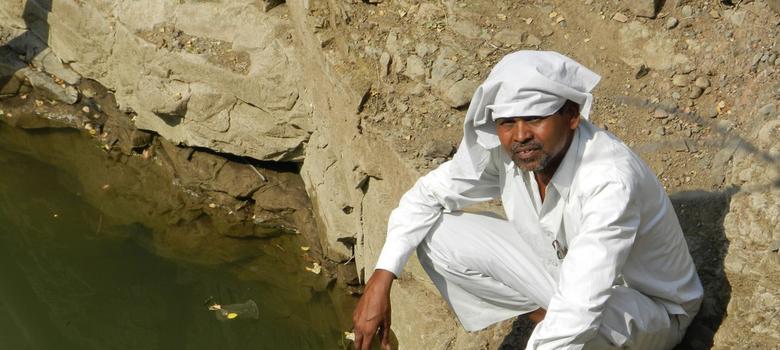
Meteorologists are beginning their monsoon predictions this year with good news – the El Nino seems to be fading and the rains could be normal. This, after two years of back-to-back drought. But India will first have to make it through a grueling summer.
The Indian Meteorological Department is to issue its first-ever summer forecast which says that India is expected to record temperatures above normal for April-June. The worst-affected regions are likely to be Delhi, Haryana, Punjab, Rajasthan, Himachal Pradesh, Uttarakhand and Uttar Pradesh, parts of Kerala and Vidarbha in Maharashtra.
Scroll.in is keeping an eye on heat-stress and water shortage to bring you daily updates of impacts from across the country.
Hot spots
The met department’s daily warning for heat stress on Tuesday flagged eastern parts of Madhya Pradesh, Telangana, Vidarbha, north interior Karnataka, parts of Jharkhand and Odisha. Private weather forecaster Skymet observed that temperatures on Monday in central and south-central India hovered between 41 degree Celsius and 44 degree Celsius.
News reports have emerged of at least 55 heat-related deaths in Telangana in the past month but the state’s commissioner for disaster management says there is no official data to indicate this yet.
Odisha, where temperatures have touched 43 degrees in Kalahandi, is preparing to put a heat action plan in place to prevent heat-related deaths this summer. The plan is to enforce rules at construction sites and brick kilns to disallow people working outdoors in peak heat. The government plans to send temperature alerts as bulk mobile messages. Heat alerts will also be sent to automatically trigger earlier working hours for schools and offices and restricted public transport during the hottest hours between 11:30 am and 3:30 pm.
Falling water levels
A bleak situation has emerged in Rachi at the Sitarampur dam where water levels have dropped to as low as ten feet, reports The Pioneer.The shortage is likely to hit water supply to the Adityapur industrial area and the neighbouring townships of Adityapur and Gamharia. Officials are taking about cutting industrial water supply to extend drinking water availability by a few days.
Water levels across the country are hitting record lows. In a scary development reported from the Farraka barrage in West Bengal, water discharge of the river Ganga were only 50,710 cusecs on March 29 as compared to 83,807 cusecs and 91,001 cusecs on the same day in the past two years. Stretches of the Godavari in Nashik have dried up completely, with residents in Chandori village reporting seeing shrines on the river bed for the first time in 30 years.
The Central Water Commission warned last week that the 91 reservoirs across the country are far below the normal levels for the season at only a combined 25% of full capacity. Levels of reservoirs in southern and western India are much lower than average at 17% and 21% respectively.
The drought, meanwhile, may have created 18 lakh refugees who have left Bundelkhand for Delhi, reports CNN-IBN.
[“source-Scroll”]
